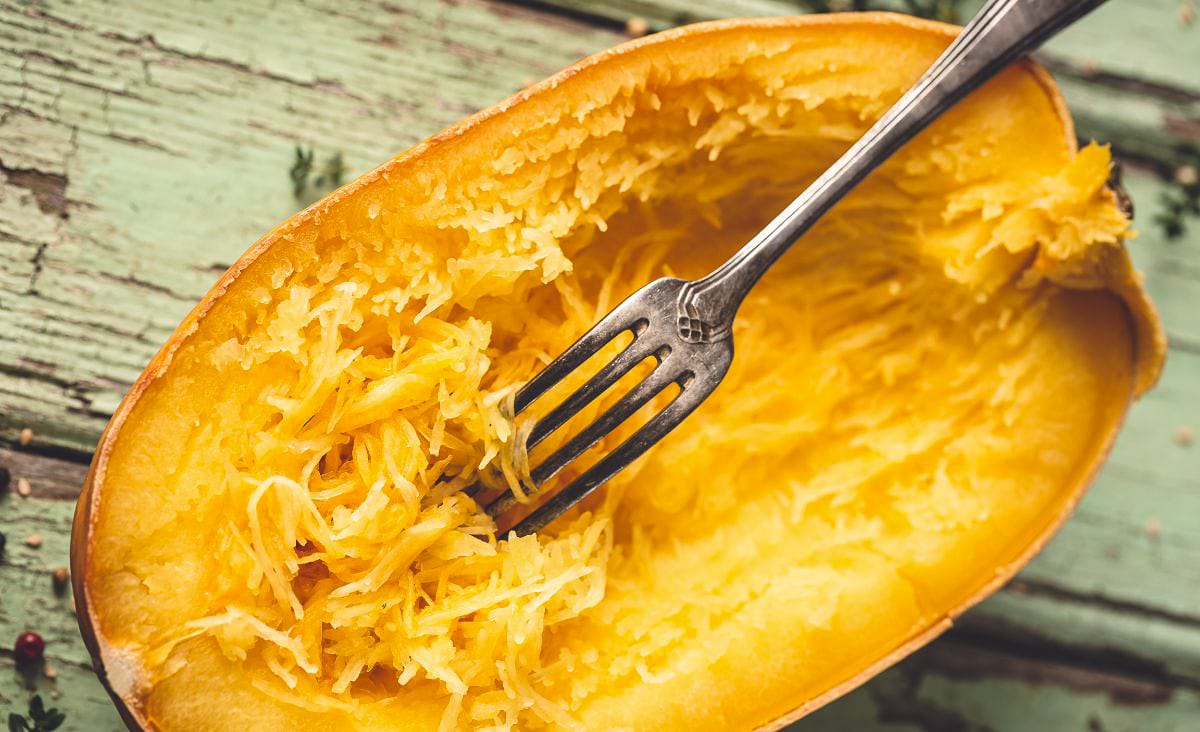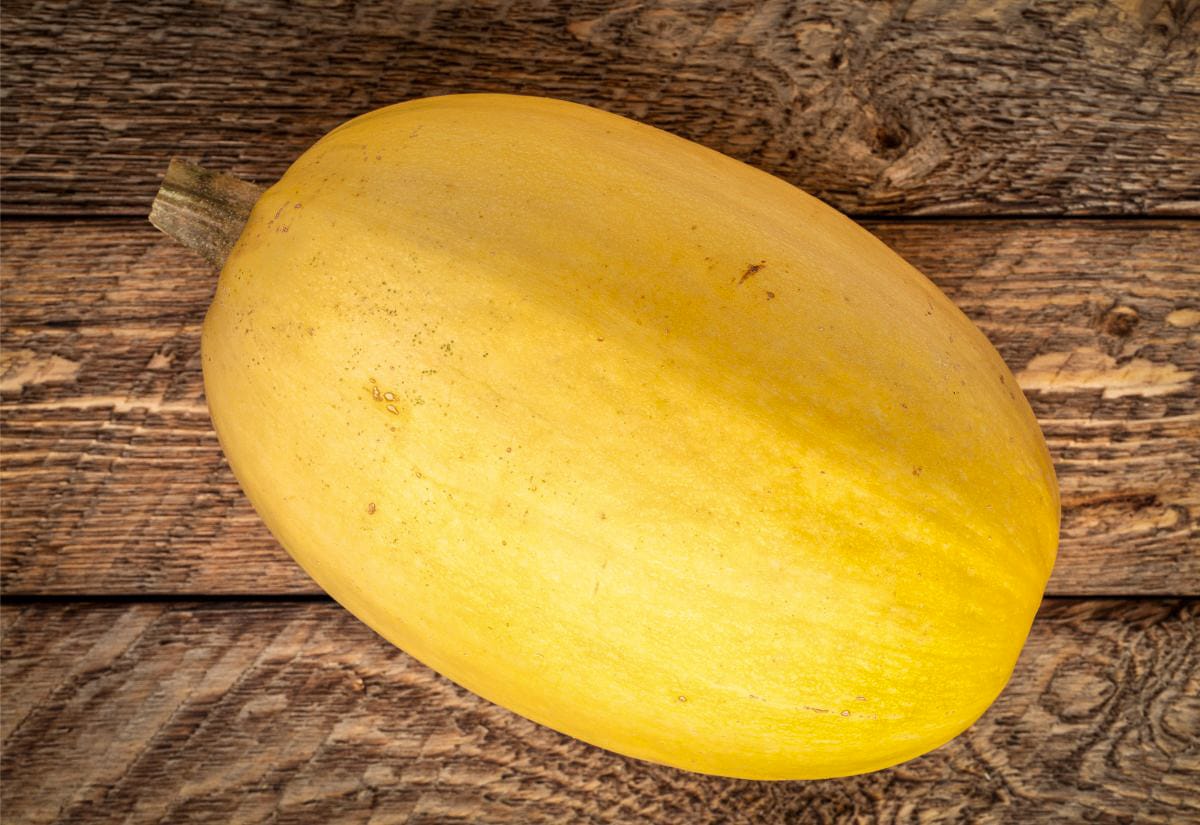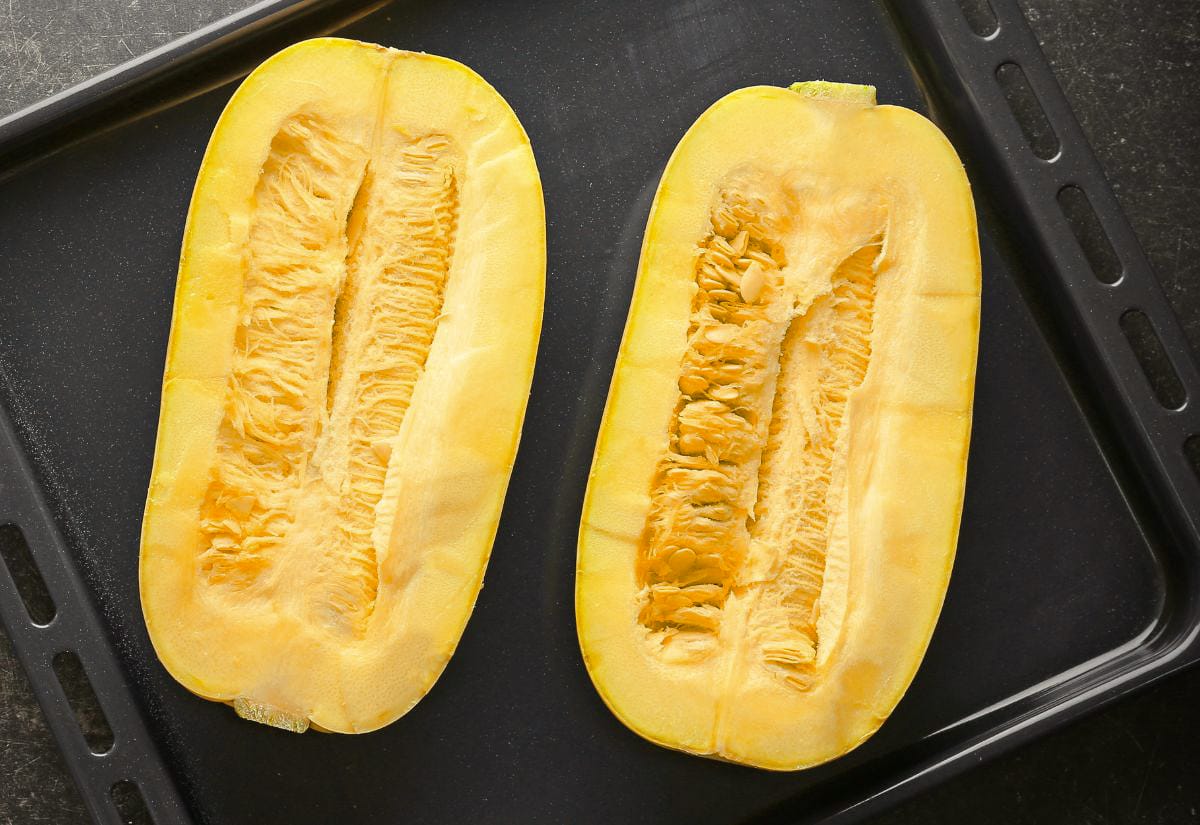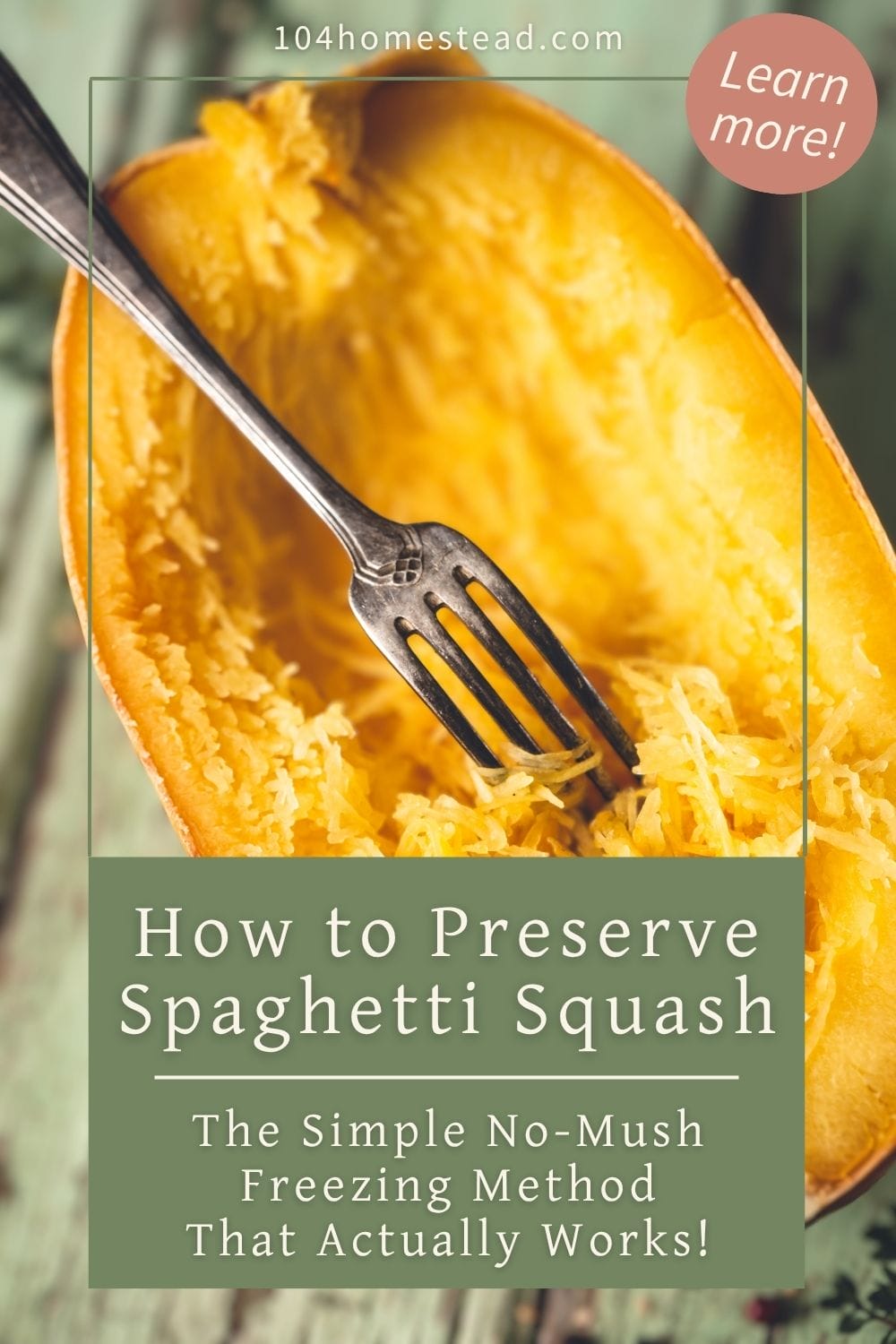How to Preserve Spaghetti Squash (Without Ending Up with a Soggy Mess)
Learn how to preserve spaghetti squash the easy way. My no-mush freezing method keeps it firm, flavorful, and ready for cozy winter meals.

Ever end up staring at a kitchen counter covered in bright yellow spaghetti squash, wondering how on earth you’ll use it all before it turns? I’ve been there. Between a good gardening season and a few impulse buys at the farmers’ market, I’ve found myself rich in squash and short on time.
The good news? Preserving spaghetti squash isn’t complicated, and if you freeze it right, it still tastes garden-fresh, even in the dead of winter. Here’s exactly how I freeze spaghetti squash so it doesn’t turn to mush.
If you love finding creative ways to make your harvest last, you might also like learning how to preserve garlic or how to preserve hot peppers. Both are simple ways to make the most of what you’ve grown.
Why I Swear by Freezing Spaghetti Squash
You can can it, dehydrate it, maybe even ferment it if you’re adventurous—but spaghetti squash really shines in the freezer. Canning can turn it mushy and stringy. Freezing keeps the flavor and texture right where you want them (if you do it the right way).
When I first started freezing squash, I assumed I could just cube it and toss it into a bag. (Spoiler: that’s a fast track to watery mess.) It took me a few tries to figure out that roasting and draining make all the difference.
Pick the Right Squash Before You Freeze
When you’re freezing veggies, freshness makes all the difference. A slightly soft carrot might still be fine for soup, but spaghetti squash doesn’t bounce back once it starts to go soft. Choose squash that’s:
- Firm and heavy for its size
- Free from cracks or soft spots
- Fully cured (the rind should look dull and feel tough)

If a squash has a bad spot, cook it right away instead of freezing. And if you save seeds for next year’s garden, scoop them out before roasting. They’ll store best when dried separately. (If you’ve ever wondered what really happens when you save seeds from hybrid plants, I’ve got a post that explains why it’s not always worth it.)
Step-by-Step: My No-Mush Freezing Method
Here’s how I handle it when the counter’s covered in squash and I’m out of fridge space.
Prep and Soften for Cutting
Cutting through a raw spaghetti squash can feel like wrestling a small pumpkin. I like to microwave it for 3–5 minutes first (after poking it a few times with a knife to vent). This softens the rind just enough to slice safely. Set it cut-side down on a sturdy cutting board, and tuck a damp towel underneath so it doesn’t slide around. Scoop out the seeds and stringy bits with a spoon. A serrated grapefruit spoon works surprisingly well here.
Roast to Tender (But Not Mushy)
Arrange the halves cut side up on a baking sheet and roast at 375°F for about 30 minutes. You’re going for tender, but not falling apart. If your fork glides in easily but the strands don’t fall apart, you’ve nailed it. It’s better to pull it a few minutes early than risk it turning to mush later.

Cool, Strand, and Drain
Let it cool a bit before diving in. If it’s still piping hot, you’ll steam the strands and lose that nice bite. Use a fork to gently rake the flesh into spaghetti-like strands, working lengthwise from end to end. Place the strands in a colander set over a bowl, cover lightly, and let them drain overnight in the fridge. This little overnight rest pulls out the extra water that loves to make thawed squash sad and soupy.
Package and Freeze
Divide the cooled, drained strands into meal-sized portions. Press them into freezer-safe bags or containers, flattening to remove air before sealing. Label each with the contents, date, and approximate amount. Future you will appreciate the organization.
If you don’t have a vacuum sealer, dunk the open bag into a bowl of water (just up to the seal) to push the air out before closing. It’s a little trick I use for everything now.
Store the bags flat in your freezer for up to 12 months. Once thawed, use within 3–4 days.
How I Use Frozen Spaghetti Squash
Frozen spaghetti squash works in just about anything I normally serve it as a substitute for pasta. It reheats beautifully without turning watery.
It also makes a great low-carb base for all kinds of sauces. Pair it with my homemade spaghetti sauce for a quick weeknight dinner that still tastes like summer.
Here are a few tried-and-true ideas to get you started:
- Cheesy Chicken & Ranch Casserole from Jar of Lemons: Easy, gluten-free comfort food.
- Italian-Style Baked Squash Bowls from The Rising Spoon: A perfect one-dish dinner.
- Sp-egg-etti Squash Bites from Joy Filled Eats: Clever breakfast bites your kids will actually eat.
- Or try swapping it into your favorite pad thai recipe. It soaks up the sauce without losing texture.
If you’re feeling adventurous, spaghetti squash is delicious in muffins, pies, and even Indian-style kheer pudding.

How Long Frozen Spaghetti Squash Lasts in the Freezer
Properly drained and sealed, your squash will hold its best quality for 10–12 months. I’ve gone past a year and it was still just fine. Not perfect, but definitely good enough for dinner. Air and moisture are what ruin it, so seal well and make sure it’s drained.
Common Questions About Freezing Spaghetti Squash
Still have questions? Here are a few things people often ask after trying this method.
Don’t lose this one! Save it to your garden or freezer tips board so you’ll have it handy come harvest season.

Learning how to preserve spaghetti squash has saved me from tossing more than a few forgotten gourds. Freezing’s easy, reliable, and keeps that fresh-picked texture surprisingly well. Once you’ve done it once, you’ll wonder why you ever let extra squash go soft on the counter.
So go ahead, roast a few, freeze a few, and rest easy knowing you’ve got healthy “noodles” ready for cozy winter meals.

Have you used your preserved squash and was it as good as fresh?
Yep, I’ve used it in casseroles, soups, and skillet meals. It’s not quite the same texture as fresh, but still tasty and super handy to have on hand.
Thank you so much for wonderful recipes! What I love about your website most of all is that you post not only great recipes and descriptions but also stunning photos of food! Have a nice day.
Thank you so much!
“Love this roundup idea! I am making a “basics” cookbook for a few of my girlfriends who are getting married this summer. Definitely going to include some of these ideas!
“
This sounds great. I will be trying to freeze some tomorrow. Although I won’t be baking mine in the oven. I will bake mine whole in the crock pot. Then cool a little, cut into rings and press out with my fingers. You get longer strings that way. Cooking in the crock pot you don’t have to heat up the kitchen. Living in Florida I found it is important to find other ways to cook things. All of my winter squash will now be cooked in the crock pot. I will be using your freezing tips. They sound great. Thank you the great tips.
Hey! How do you cook the spaghetti squash in the crockpot to freeze? I have a lot.
Can’t wait